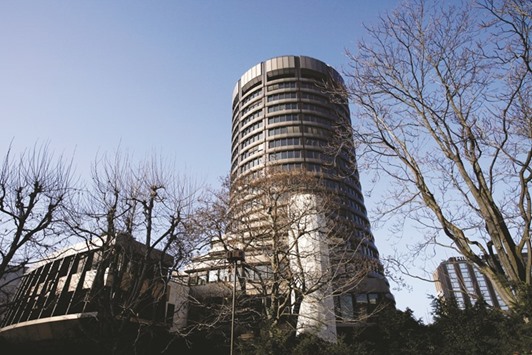Negative interest-rate policies currently in use by central banks around the world have worked through their respective systems in much the same way as positive rates, though it’s not known how far below zero that would continue to be the case, the Bank for International Settlements said.
In its quarterly report published yesterday, the Basel-based “central bank for central banks” said that “so far, zero has not proved to be a technically binding lower limit for central bank policy rates.”
“Nonetheless, there is great uncertainty about the behaviour of individuals and institutions if rates were to decline further into negative territory or remain negative for a prolonged period,” it said. “It is unknown whether the transmission mechanisms will continue to operate as in the past and not be subject to ‘tipping points.”’
The BIS’s verdict on negative rates gives backing to the European Central Bank, the Bank of Japan and others at a time when such unconventional methods are facing increasing criticism for their potential impact on the financial industry and currency markets. A sell-off in European bank stocks this year was partly driven by fears that further rate cuts by the ECB would damage profitability in a sector still recovering from the debt crisis.
“The experience so far suggests that modestly negative policy rates are transmitted to money-market rates in very much the same way as positive rates are,” report authors Morten Bech and Aytek Malkhozov said. “Anecdotal evidence suggests banks seek to avoid negative rates by either extending maturities or lending to riskier counterparties.”
The report also presented calculations of the average effective rate that banks pay on cash above the minimum requirements or exemptions at the ECB, the Swiss National Bank, the Riksbank and the Danish central bank, showing that a lower negative policy rate doesn’t necessarily translate into a more expensive proposition for lenders. For example, while Switzerland’s central bank has the lowest policy rate at minus 75 basis points, the exemption of some deposits means that the average rate is only minus 27 basis points.
Fears that interest rates below zero would prompt banks or the public to withdraw and hoard cash rather than pay penalties so far haven’t materialised in any jurisdiction, according to the report. This is partly due to banks’ “reluctance to pass negative rates through to retail depositors,” with the exception of Switzerland, where some lenders actually increased mortgage rates to mitigate some of the costs incurred at the central bank.
“The Swiss experience points to a fundamental policy tension if the intention of negative policy rates is to transmit negative interest rates to the wider economy,” the BIS said.
“If negative policy rates do not feed into lending rates for households and firms, they largely lose their rationale. On the other hand, if negative policy rates are transmitted to lending rates for firms and households, then there will be knock-on effects on bank profitability.”
‘Funding slowdown may signal turning point in liquidity’
Bloomberg
London
A decline in international financing may signal the beginning of a tightening in global credit markets, according to the Bank of International Settlements.
Outstanding debt securities fell the most in three years, with repayments surpassing new issuance by $47bn in the fourth quarter, the Basel, Switzerland-based institution said in a report published yesterday that cited drops in a raft of measures of international financing. The decline in outstanding debt was driven by weak issuance by financial companies in developed economies.
The slowdown may indicate financing is drying up, according to the report, which highlighted the “uneasy calm” in financial markets in late 2015 amid the prospect of higher Federal Reserve interest rates, slowing demand from China and plunging commodity prices. The deterioration of global growth prospects has rattled markets from the start of this year.
“These developments in international bank and securities credit are significant because they may signal a turning point in global liquidity,” BIS said in the report. If tighter liquidity conditions persist, they “may raise stability risks in some countries, especially those where other indicators already point to a heightened risk of financial stress.”
Dollar borrowing by non-banks in emerging market economies in September was unchanged from June at $3.3tn, the first time it hasn’t increased since 2009, according to the report. Dollar-denominated credit to non-bank borrowers outside the US also remained flat. International bank claims contracted 0.8% in the third quarter compared with a year earlier.

The exterior of the Bank for International Settlements (BIS) in Basel. In its quarterly report published yesterday, the BIS said u201cso far, zero has not proved to be a technically binding lower limit for central bank policy rates.u201d


